Sauerkraut is probably the classic German ferment, but why not go one step further and ferment wine sauerkraut yourself? It's actually rather easier than traditional sauerkraut because wine is added and therefore not as much brine needs to be kneaded.
Jump to recipeFermenting your own cabbage is not only satisfying, it's also healthy. You know exactly which ingredients you are using and the ferment remains free of unnecessary ingredients. With wine sauerkraut, you can also choose the wine yourself - that's a good reason to make a toast.
The secret to fermenting wine sauerkraut yourself lies, quite obviously, in the addition of wine. A maximum of 15% of the total weight may be added to ensure reliable lacto-fermentation. Traditionally, white wine is chosen, but if you don't mind the color change, you can also try a variant with red wine.
Fermenting wine sauerkraut yourself is just cool
Self-fermented wine sauerkraut is not only a treat for the palate, but also a good start to exploring the world of fermentation. The taste is already familiar to many, making it a good ferment to start with. With the right amount of wine, reliable lacto-fermentation is ensured, which is not only responsible for the unique taste, but also for the health benefits.
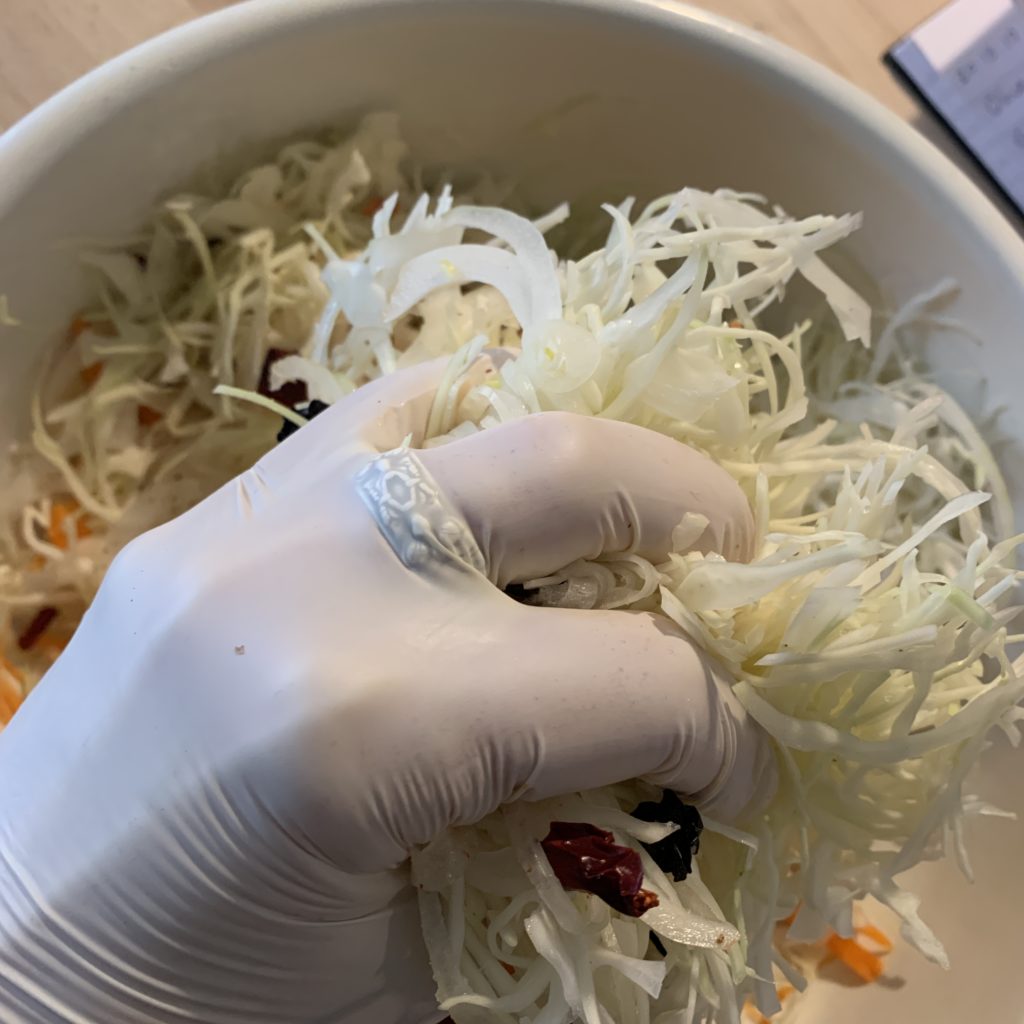
Health benefits
Sauerkraut is a natural source of vitamin C, vitamin K and folic acid. As a study still to be confirmed shows, the probiotic bacteria produced in sauerkraut promote healthy intestinal flora. Probiotics also support healthy digestion and nutrient absorption. And personally, I think homemade sauerkraut tastes so good, it can't be a bad thing.
In contrast to conventional recipes in which store-bought, pasteurized sauerkraut is cooked with wine, you can also enjoy this wine sauerkraut gently warmed. The taste is familiar! And all of you who don't want to give up la single actobacillus can easily do so with this cabbage - without any loss of taste.
Pineapple sauerkraut
Sauerkraut with pineapple is very delicious - sweet and sour, anyone?
- 1 white onion
- Lard or ghee
- 800 gr. selbstgemachtes Weinsauerkraut
- 2 bay leaves
- 5 juniper berries
- 100 ml white wine or broth
- 2 tbsp. raw cane sugar
- 1 pineapple
- salt & pepper
Halve the onion and cut into fine strips. Coarsely crush the juniper berries. Sauté the onions in the lard, add all the other ingredients except the pineapple, cover and cook gently for approx. 10 minutes. The lactic acid bacteria will stay alive if you do not heat the cabbage above 40° C.
Quarter the pineapple, cut off the core and peel, and, if you like, make tepache out of it. Cut the flesh into bite-sized pieces. Cook for another 20 minutes with the lid on and season with salt and pepper before serving.
Sources
Recent updates and perspectives of fermented healthy super food sauerkraut: a reviewhttps://www.tandfonline.com/doi/full/10.1080/10942912.2022.2135531

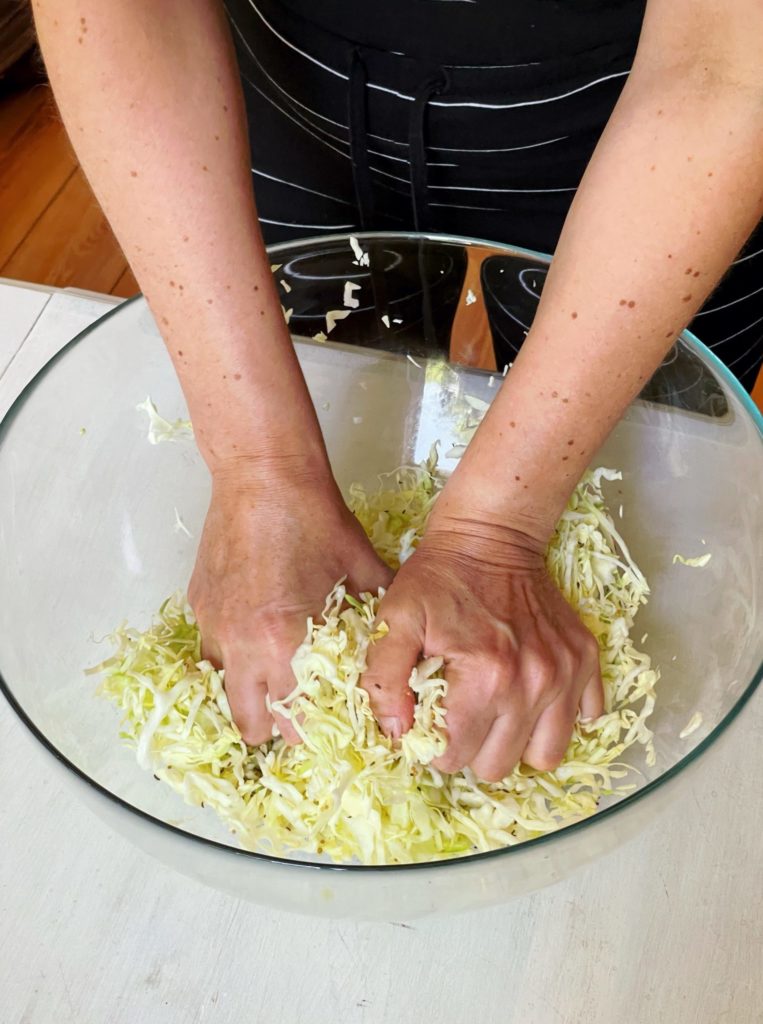
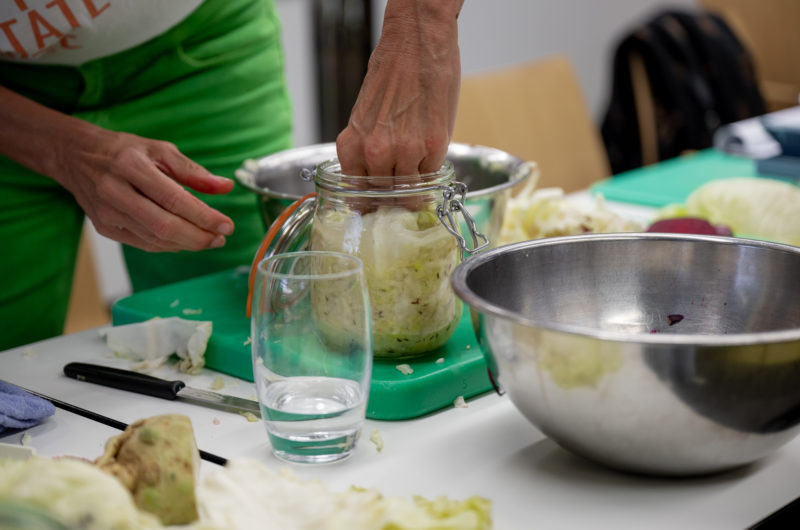
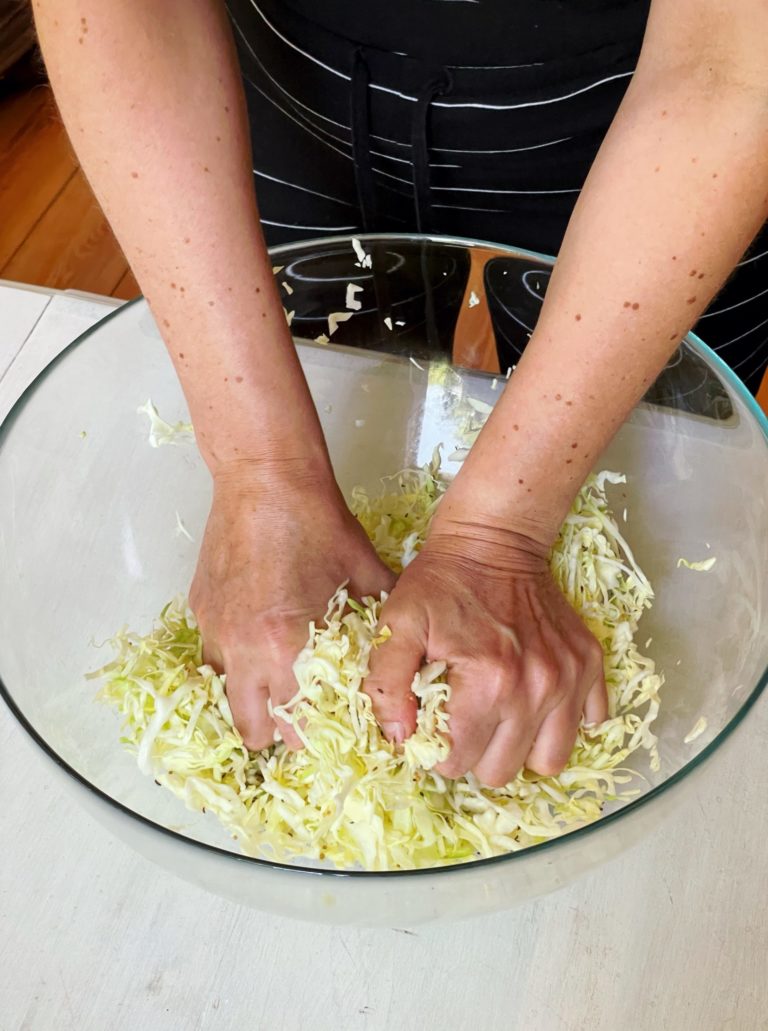
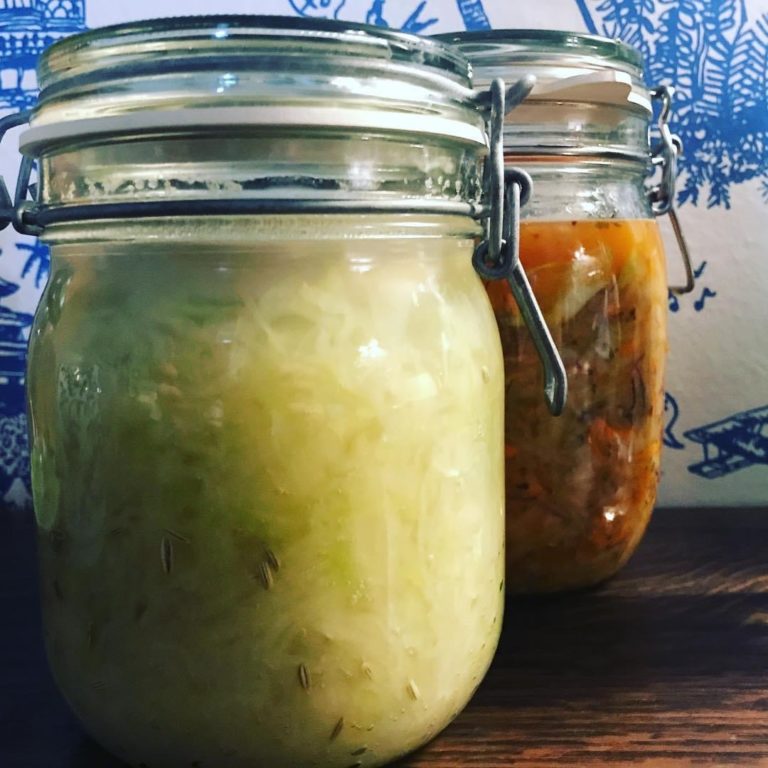
You should also have 2% salt for any liquid you add.
All in all the total salt should not be less than 1.8% of the total weight. 😀
Hej Ken, you absolutely can, but you don’t have to. And how do you get the exact 1.8%? That’s an oddly specific number.
Anything between 1 and 3% is fine for making sauerkraut.
Good luck with your ferments!
Katsu
Kann man das auch mit Traubensaft machen?
Oder hat dieser zuviel Zuckergehalt?
Warum willst du das? Das hat geschmacklich nichts mit Weinsauerkraut zu tun, dann mach lieber klassisches Sauerkraut, hier ist das Rezept: https://fermentation.love/sauerkraut/sauerkraut/.